Last summer’s World Cup saw the exciting resurgence of Africa’s most decorated female football team, with the Nigerian Super Falcons ultimately bowing out to eventual finalists, England.
Emerging from a group with talented hosts Australia and reigning Olympic gold medalists Canada was an extraordinary feat in itself, with the Nigerians displaying excellent levels of quality play and defensive resilience.
Whilst a penalty shootout loss to England was a cruel way to exit the competition, it provided the nation with an important platform to build upon, with fans once again excited by their national team.
In the space of 12 months, the Super Falcons have endured a rollercoaster qualifying phase, which has ultimately seen Nigeria qualify for their first Olympic games since Beijing 2008.
With the 16-year drought finally overcome, head coach Randy Waldrum cited the team’s defensive strength after critical 1-0 aggregate victories against Cameroon and South Africa.
Nigeria will have to display another summer of resilience, as they look to tackle another ‘group of death’ alongside world champions Spain, Japan and Brazil.
Ahead of an intense Olympic games in which 12 of the world’s best nations will go head-to-head, the lack of preparation-friendly matches has worried Waldrum, who has not been shy when challenging the nation’s footballing federation.
Having split coaching responsibilities between the Super Falcons and the University of Pittsburgh since the World Cup, it begs the question of whether Nigeria will be tactically ready ahead of their opening encounter with Brazil.
This tactical analysis will highlight Nigeria’s play both in and out of possession, providing insight into how they are staking their claim to become Africa’s best once again.
Our scout report and analysis will also identify the Super Falcon’s key player, who we think could make all the difference when observing the need to improve their attacking tactics.
Predicted Starting XI
Coming off the back of a successful showing in last year’s World Cup, it would be wise to suggest that Nigeria will continue utilising the 4-2-3-1 under the guidance of Randy Waldrum.
The formation allows a healthy balance of defensive solidity and remaining threatening at the business end of the pitch with nice interchanges.
Should Nigeria become under significant threat within the group phase, this allows for their number ten to drop deeper and provide more midfield superiority whilst a member of the double-pivot acts as the anchor ahead of the defensive line, switching to more of a 4-1-4-1.
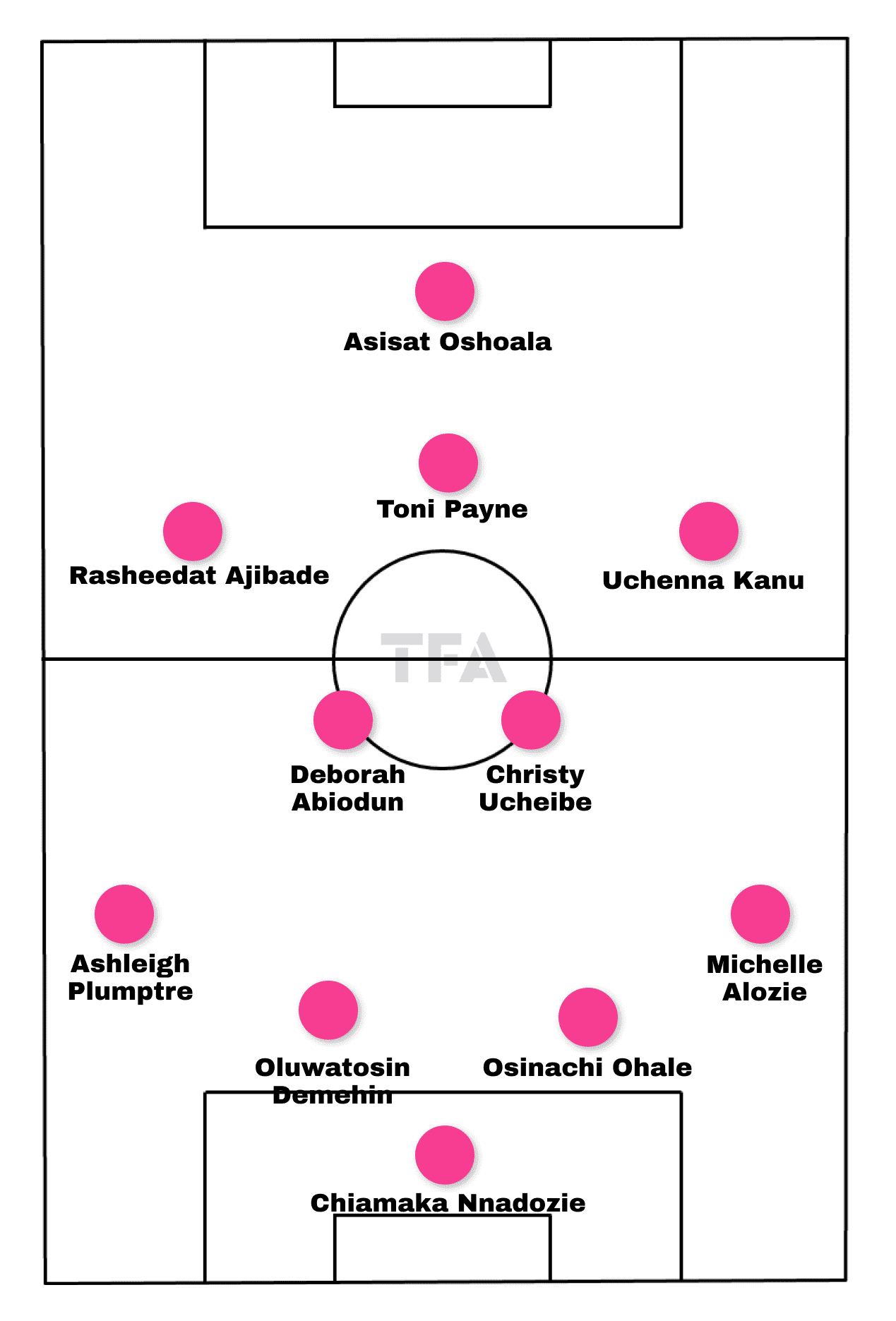
After guiding Paris FC to a spot in the UCWL, Nigeria’s ever-present Chiamaka Nnadozie will be their shot-stopper between the sticks, guiding the Super Falcons to consecutive clean sheets against Cameroon and South Africa in qualifying.
Nigeria’s defensive line will probably comprise Ashleigh Plumptre and Michelle Alozie on the flanks, with Osinachi Ohale and Oluwatosin Demehin being a dependable pairing through the middle.
The Super Falcons were able to withstand significant defensive shuffling during the crucial stages of Olympic qualifying, with both Plumptre and Demehin being absent from their final tie due to injury concerns.
With a race against time for both players to reach full fitness before the summer, Waldrum will be comforted by the versatility and sharpness of both Chidinma Okeke and Nicole Payne, who impressed when filling in for Nigeria.
In the midfield, we expect to see a double-pivot pairing of Christy Ucheibe and Deborah Abiodun, with the youthful Abiodun looking to overcome her early dismissal at the World Cup and provide the energetic spark in Paris.
Halimatu Ayinde offers a resolute defensive profile should Nigeria look to be more conservative, and look out for Juventus’ Jennifer Echegini with excellent line-breaking movements, bridging the gap between midfield and attack from the bench.
Sevilla’s Toni Payne will then look to act as the advanced playmaker, as she possesses impressive attacking intelligence off the ball and a confident, creative profile to operate in tight spaces in possession.
In the final third, it would appear that the Super Falcons will look to lean on Asisat Oshoala to lead the forward line, happy in the knowledge that they have one of the elite strikers in the women’s game.
Her ability to bring others into play with excellent physical capabilities is supported by her deadly nature within the penalty area.
Looking to provide for Oshoala, the creative forces of Rasheedat Ajibade and Uchenna Kanu will be on the wings; it is a nightmare for defences with their technical prowess and unpredictability.
With the ability to swap flanks and maintain a high level of play, both Ajibade and Kanu have been critical for Nigeria.
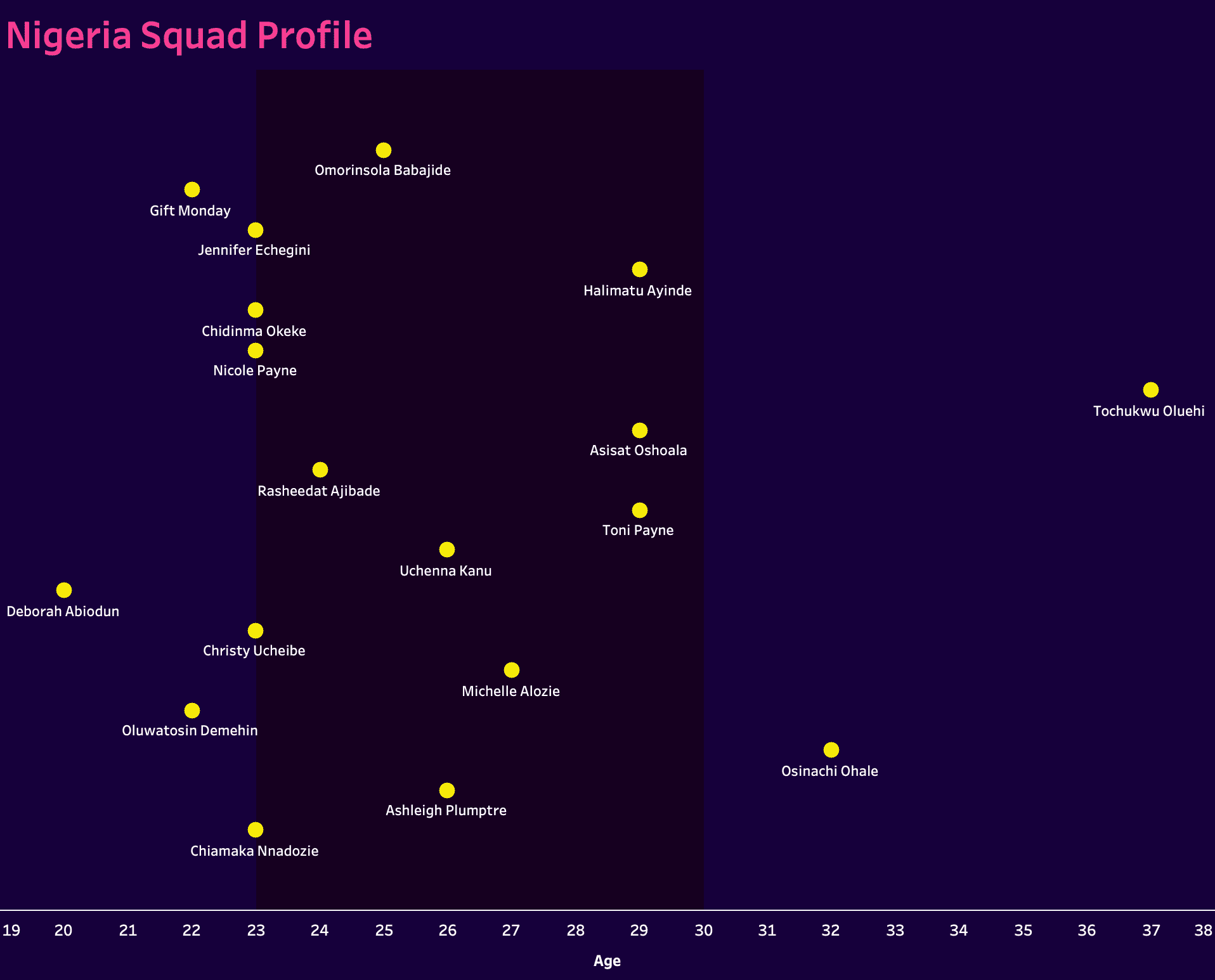
Looking at their squad composition, it is clear that the Super Falcons have placed their trust in youthful talent, with fewer players above the age of 30.
Despite looking young on paper, Nigeria’s players have significant experience across the major leagues and will be looking to be competitive against the world’s best once again.
Attacking phase
Despite Nigeria’s attacking talent appearing to be the highlight of their overall squad, it is an area which Randy Waldrum has looked to refine and improve ahead of the Paris Olympics.
After putting five goals past Ethiopia and seven past Cape Verde in the early qualifying rounds, Nigeria had to grind out two 1-0 aggregate scorelines against both Cameroon and South Africa.
It begs the question of whether or not this Nigerian attack will be firing on all cylinders once they face significantly stronger opposition like Spain and Brazil.
In the initial attacking phase, we often see Nigeria shaping up in a 2-4-3-1, with both full-backs slightly higher and the two central defenders spread wide to offer a passing outlet on both sides of the penalty area.
With the Nigerian full-backs pulling their markers wide to the touchline, this often leaves the two centre-backs enough space to carry forward and attack the channels, picking out long-range passes towards their attacking outlets or having the confidence to push forward and break the lines themselves.
At the World Cup, Nigeria appeared to struggle against Australia’s high press in the 4-4-2.
The switch to a more direct approach allowed the Super Falcons to bypass any high turnovers by looking long from the outset.
This tactical variation will be crucial when tackling their group-stage matches this year.
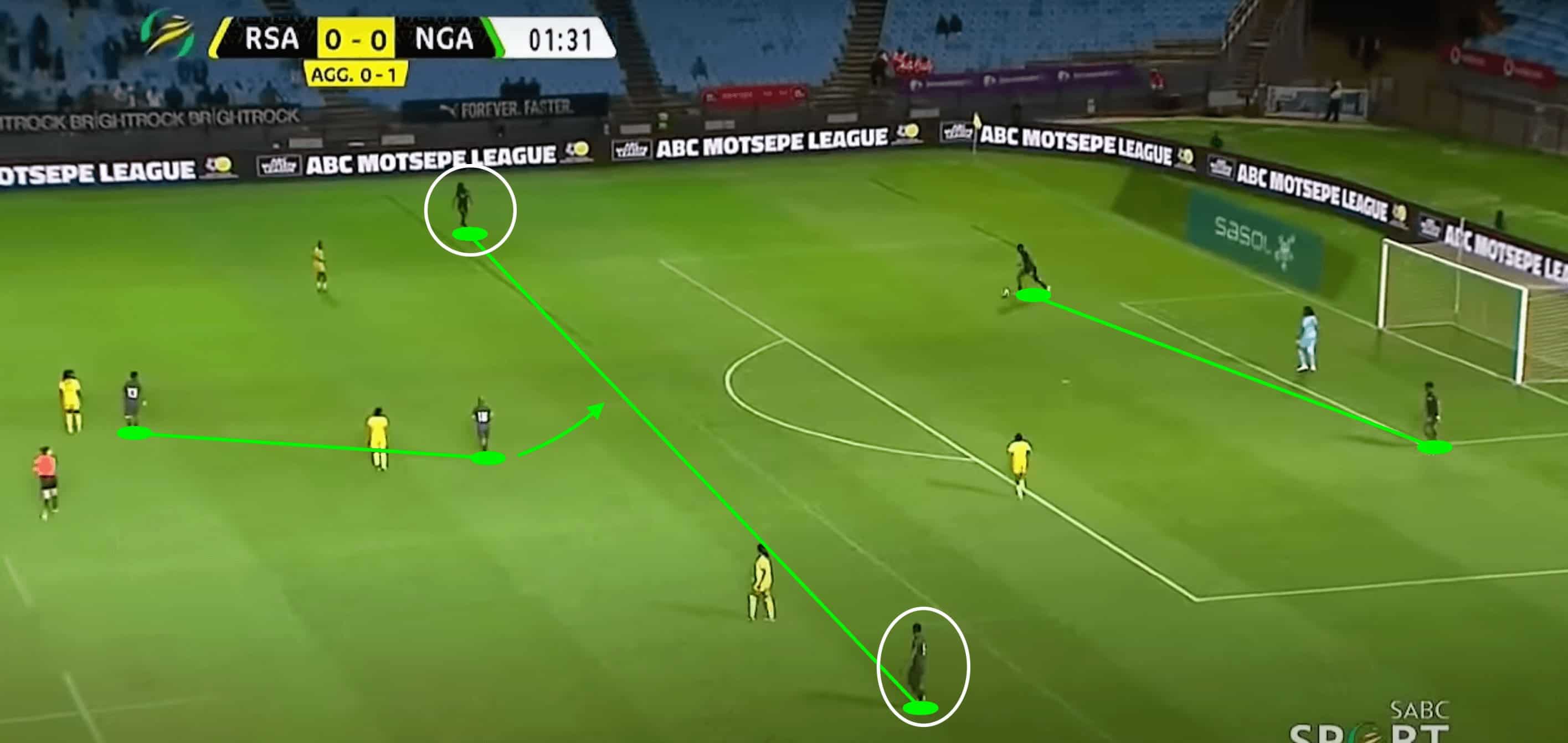
In the final third, Nigeria will look to take advantage of the talent they have out the flanks with Kanu and Ajibade, maintaining their width and looking to provide crosses into the penalty area.
Not only does this directly create more opportunities in and around the goal for Oshoala, but it also creates space inside the pitch for Toni Payne to operate.
Payne is influential with her movement closer to goal, also providing vital passing options and creating offensive overloads on the wings as she drifts across.
The ability to flood the box is key for Nigeria, especially when anticipating that their attacking opportunities will be much more infrequent.
An avenue of interest would be the movement of Uchenna Kanu appearing at the back post to capitalise on the chance creation of her teammate Ajibade on the left wing.
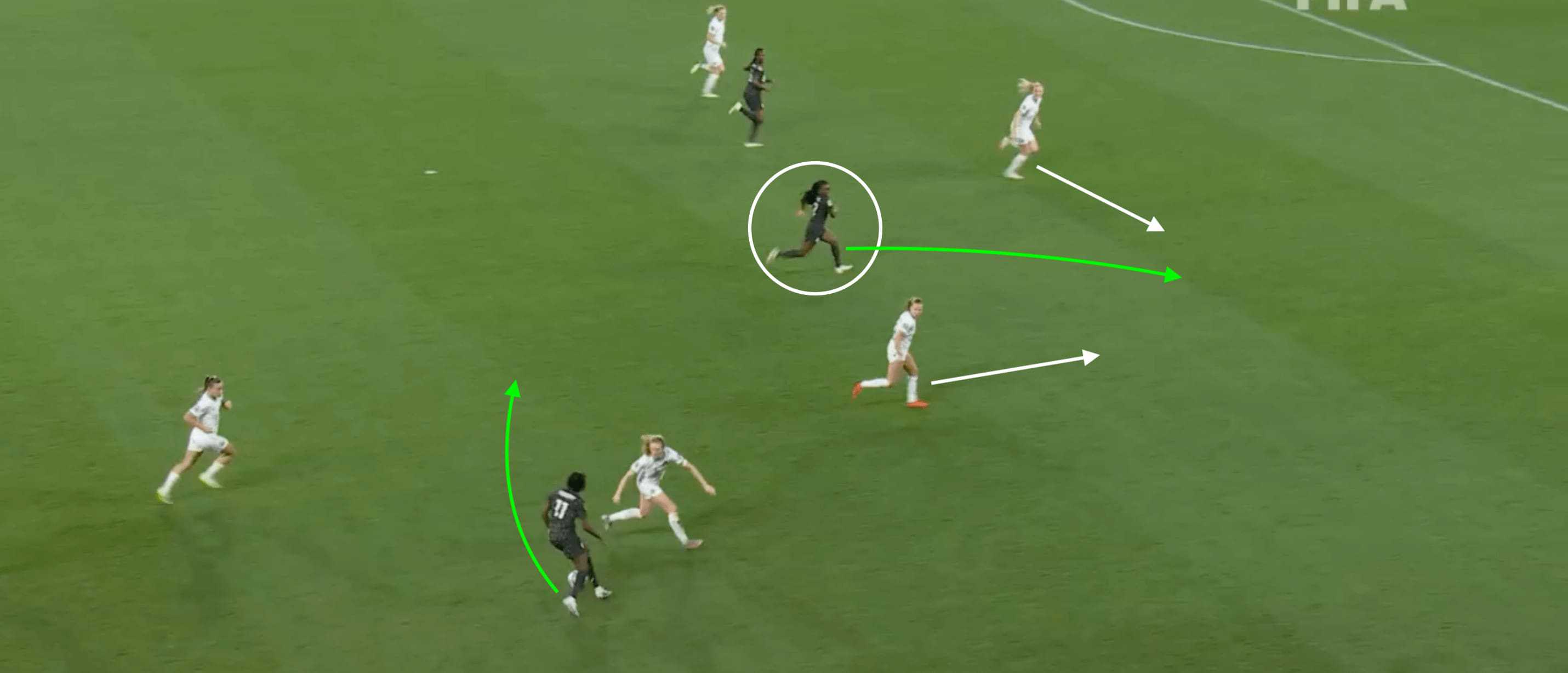
Defensive phase
On the contrary, Nigerian defensive performances have remained consistent since their surprise showing last summer, in which they conceded just two goals across their four matches.
The gritty victories that guided the nation to the Paris Olympics were built upon the defensive resilience of this Nigerian squad, with their combative nature well suited to being successful in tournament football.
Nigeria’s defensive structure resembles that of a 4-2-3-1 mid-block, but Waldrum has experimented with both a 5-4-1 and a 4-1-4-1 when defending their lead late in the match.
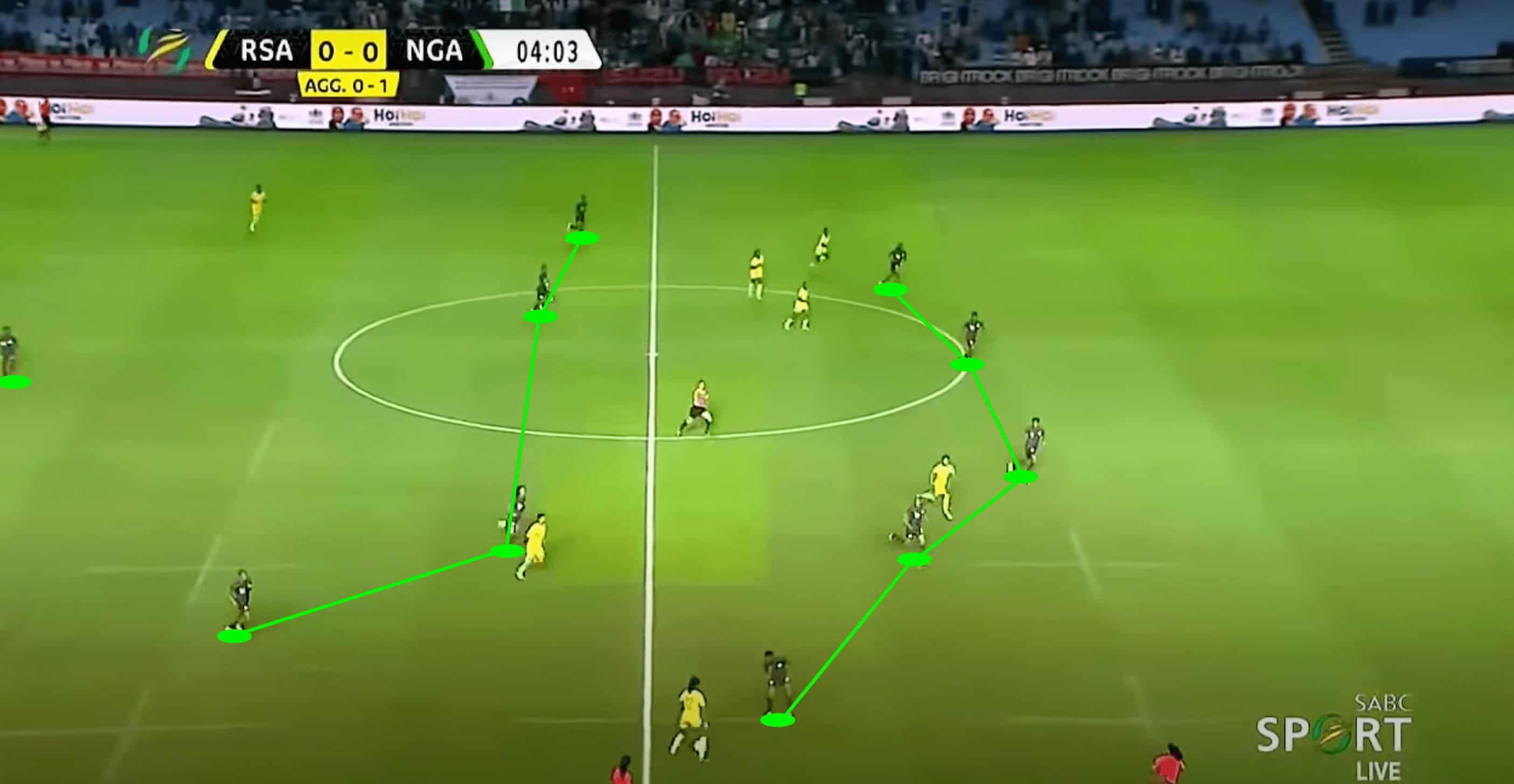
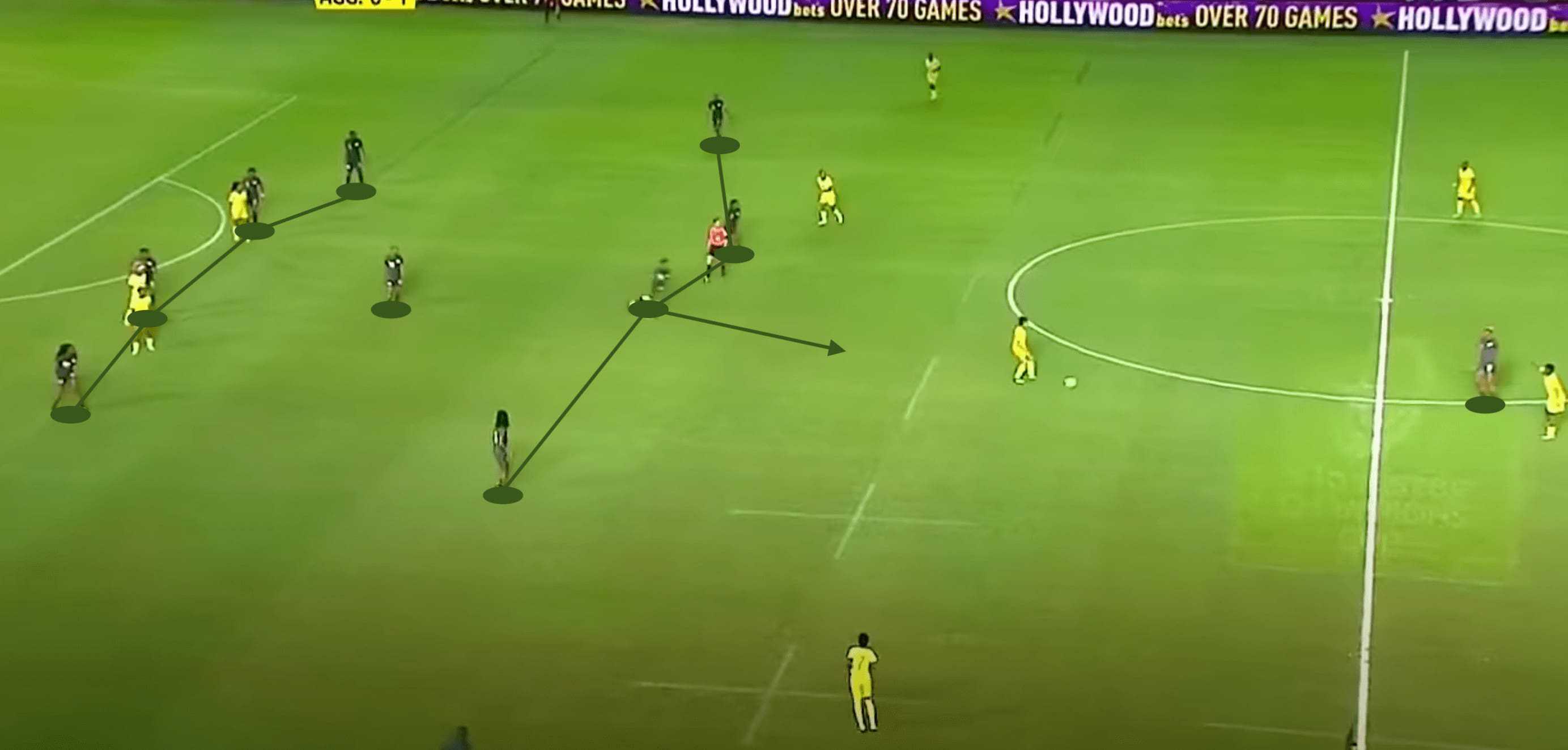
Last summer, Nigeria had just 11.99 PPDA at the World Cup, suggesting that they are happy to sit behind the ball and soak up pressure from their opponents.
However, their pressing was particularly impressive at select moments and caused elite teams some significant problems.
Their round of 16 encounter with England stood out, as they forced the European champions all the way to penalties by minimising time and space for their critical, creative outlets.
After tight marking from the outset, Ucheibe could advance forward to deny Stanway the freedom to turn and force England into rushed decision-making and halting progression.
This continued moments later, with Lauren Hemp dominated midfield, as Demehin stepped up to support, culminating in an inaccurate return pass that allowed Nigeria to threaten in transition.
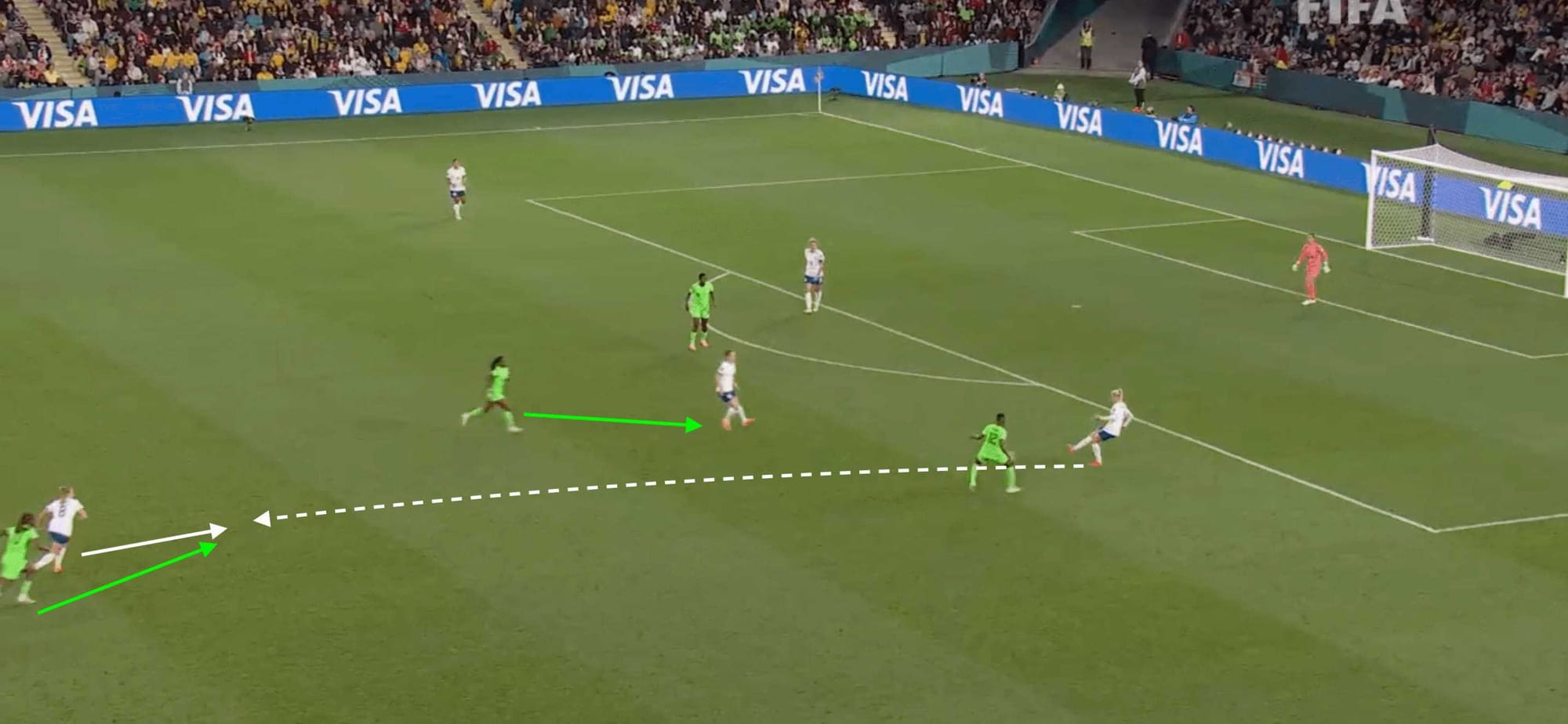
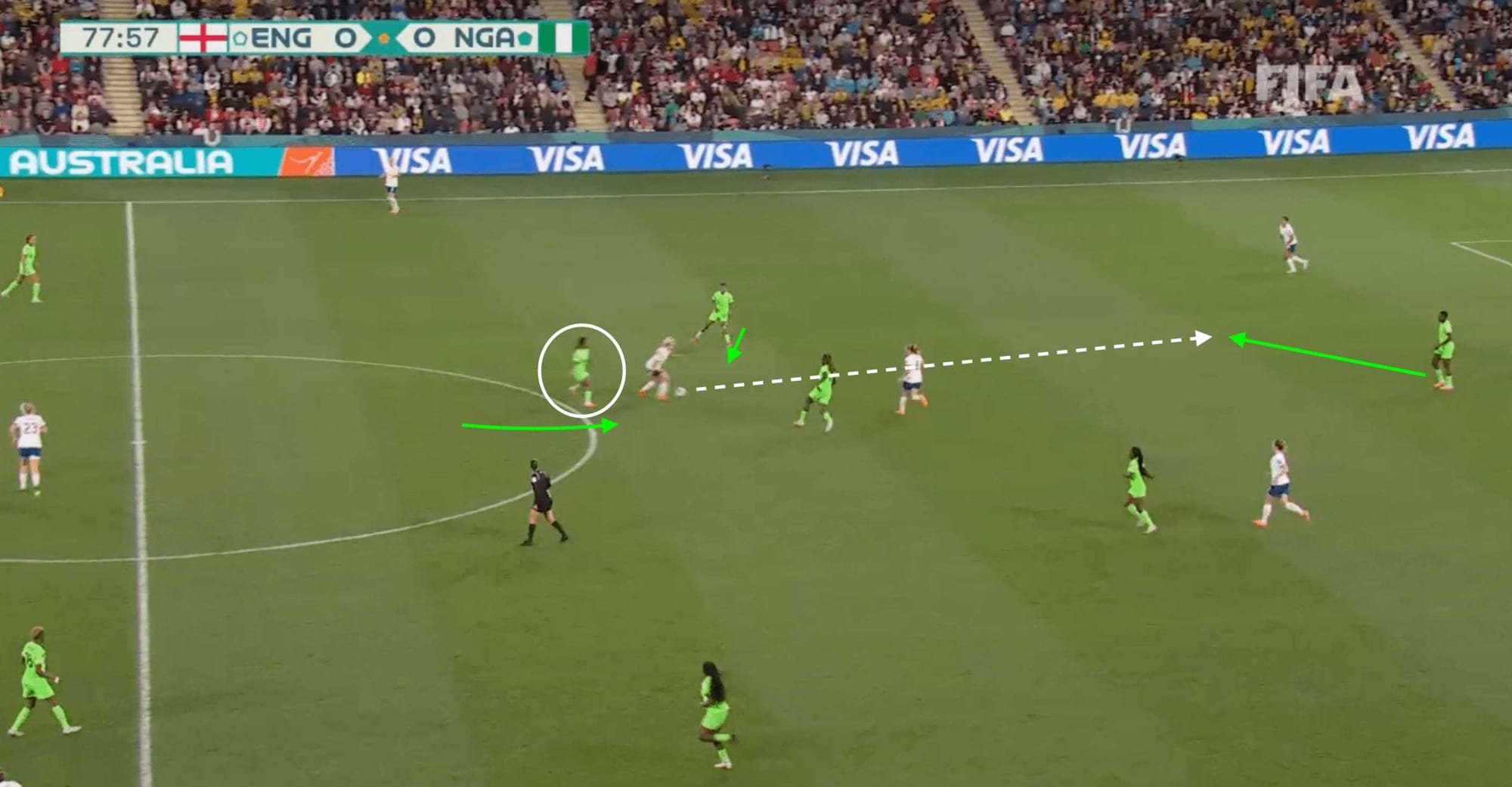
On the other hand, the Nigerian press can come with its detriments should the aggressive nature of the defending be undone.
This was evident in Nigeria’s World Cup opener with Canada, as the movement of Ashley Lawrence forced the Nigerian midfielder to overcommit, leaving Sinclair with an excellent opportunity to test the goalkeeper in acres of space.
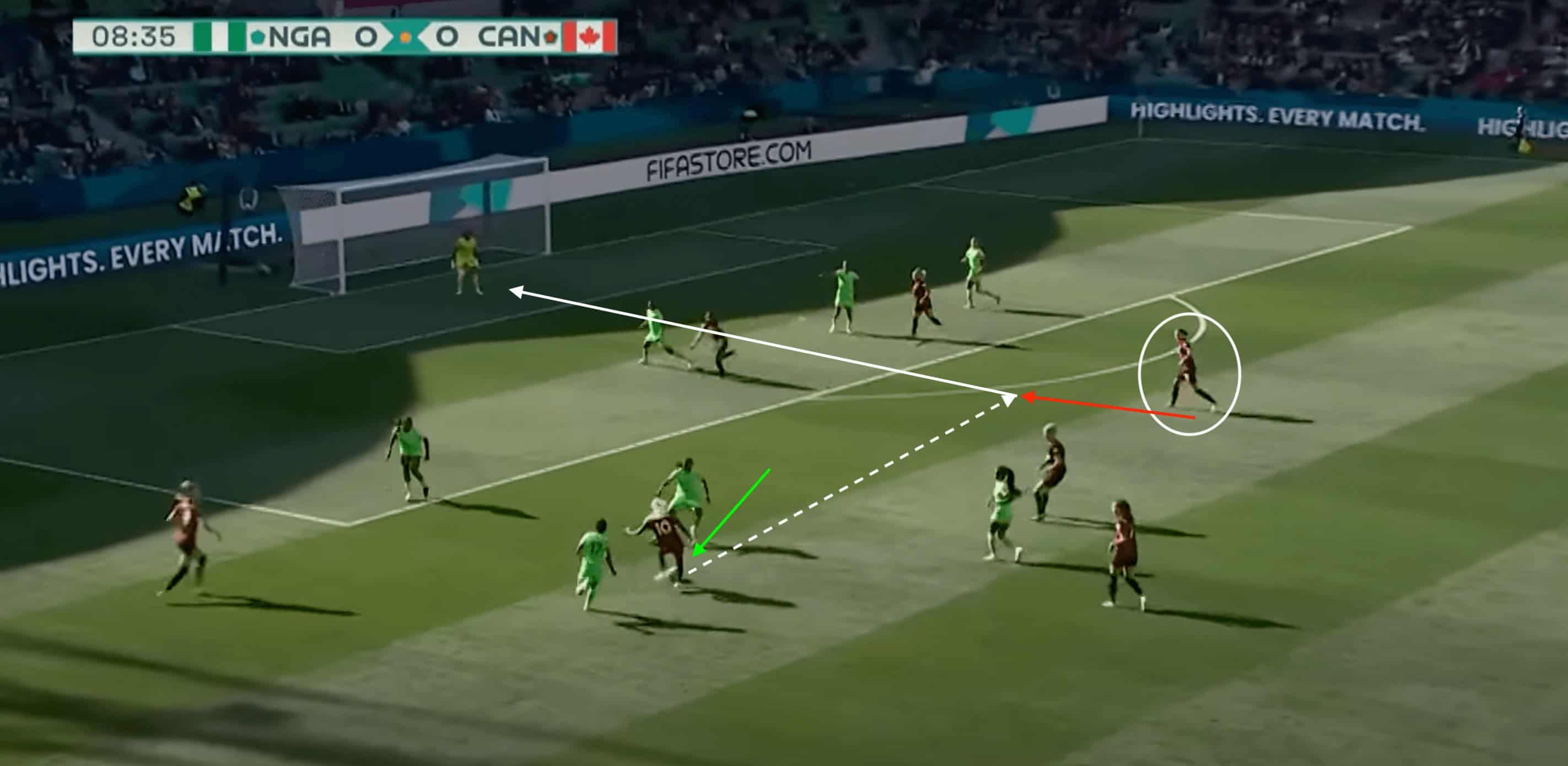
Nigeria must remain switched on and composed in their defensive structure, especially should they find themselves in the lead. Against Australia, Nigeria’s defensive efforts were almost undone when Alozie could not anticipate Foord’s movement at the back post, resulting in a huge chance with Nnadozie luckily preventing a goal.
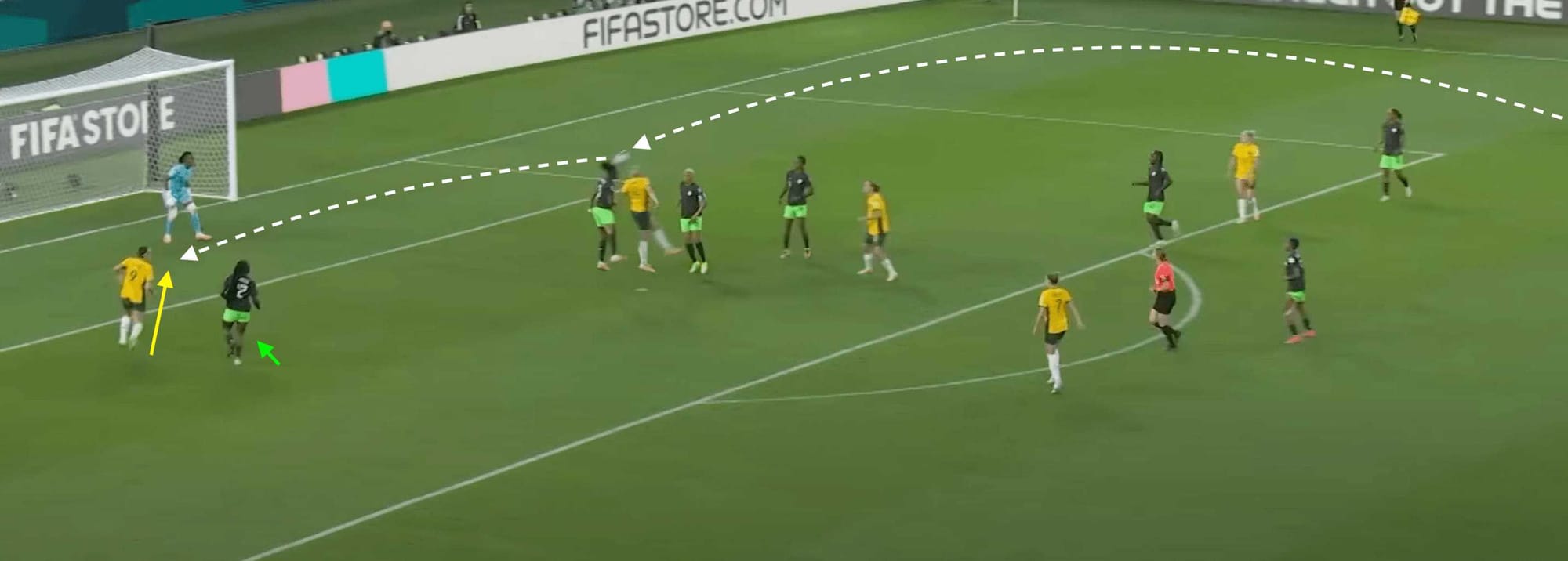
Transitions
With the knowledge that they will be down on the possession statistics, attacking in transition stands out as a critical phase in which Nigeria can hurt their opposition.
The Super Falcons have the luxury of a plethora of naturally-quick playmakers who love to attack the space and throw bodies forward when the opportunity arises.
When she isn’t picking up positions in and around the edge of the penalty area, Toni Payne can drop deeper to collect the ball and spread play towards the flanks when drawing attention towards the central areas.
Whilst the attacking midfield role can be momentarily vacated, both of Nigeria’s double-pivot has the ability to advance into the final third past Payne and, therefore, maintain the necessary attacking numbers in transition.
Nigeria’s ability to be combative and regain possession quickly often stems from their counterpressing, which proved effective in their fixture with Australia.
As the Matildas won possession in the middle third, the advanced positioning of Alozie gave Ajibade the opportunity to operate centrally, which was integral to Nigeria when regaining the ball as soon as possible.
The subsequent 4v4 allowed Payne to attack the space and Kanu to find weakness in a disjointed Australia defence.
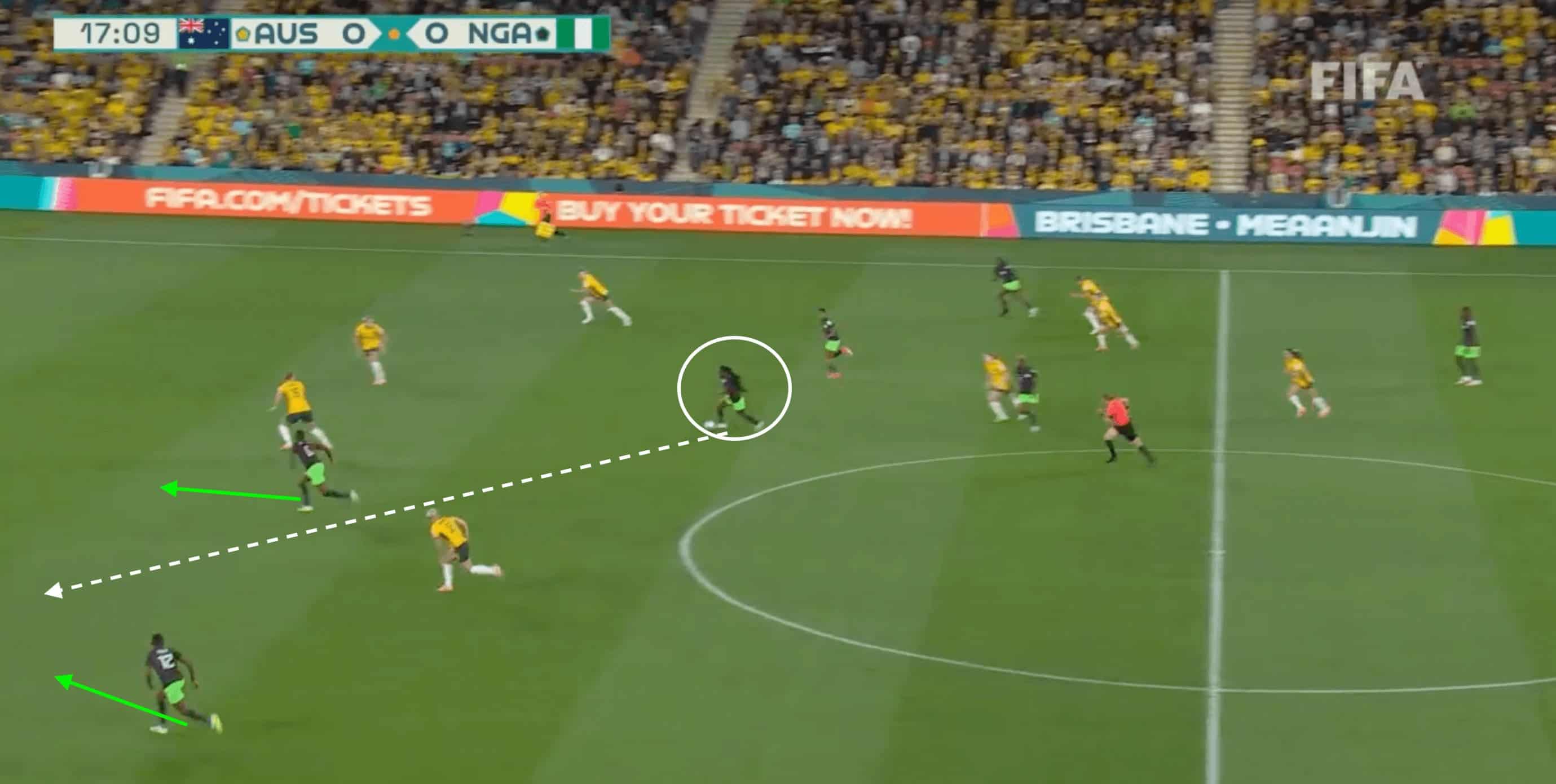
When it comes to defending in transition, it would appear that the lack of defensive structure is detrimental to Nigeria’s ability to remain compact.
Waldrum’s offensive structure with the advanced full-backs means that once possession is lost, Alozie’s attacking nature, in particular, leaves her out of position and weaker when defending the counter.
Lapses in defensive concentration will be the killer for Nigeria, which was evident when conceding the opening goal to Australia at the World Cup- with a 6v4 in Nigeria’s favour being torn apart by poor marking.
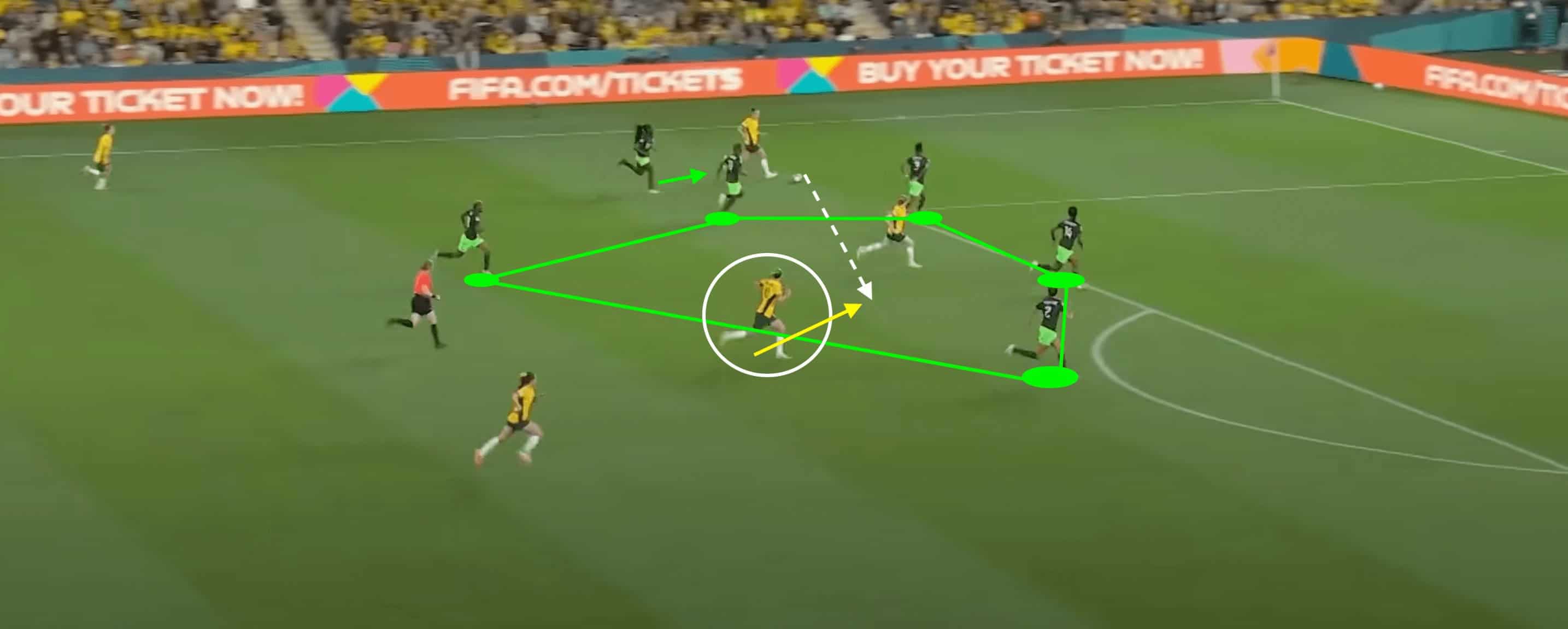
Defenders
As we have mentioned, the defensive strength of this Nigerian team has surprisingly been the main tool that Waldrum has leaned upon over the past 12 months.
Fans of the Super Falcons will feel much more optimistic should their key talents like Plumptre and Demehin be 100% fit after impressive World Cup campaigns.
Still, the entire defensive line has shown their quality in an attempt to regain their title as Africa’s best.
In possession, the overlapping runs of Alozie will be impactful in the final third, whilst Plumptre’s inverted positioning can allow Nigeria to have much more ball dominance in the middle of the park.
It will be interesting to observe whether or not the ever-experienced Onome Ebi will make the cut, with her incredible leadership potentially making up for a lack of recent playing time.
Midfielders
Nigeria’s midfield unit is incredibly versatile but will have a huge task on their hands when attempting to limit the possession of Spain, Japan and Brazil.
Halimatu Ayinde is a really useful anchor on the defensive side of the ball, who can protect the defensive line without the ball and offer a critical passing outlet in the initial phases of the Nigerian build-up.
Whilst the 4-2-3-1 would allow Payne to float just behind Oshoala, the ability for the midfield trio to interchange and run off one another could pose a significant threat and confusion to opposition defences.
Forwards
It is clear that Nigeria’s forwards will want to build on a somewhat underwhelming 12 months despite achieving their long-term goal of Olympic qualification.
Asisat Oshoala is an excellent striker to spearhead the Nigerian attack, with pace and physicality to stretch opposition defences and naturally create space for her teammates.
We can expect Nigeria to remain consistent in their desire to attack the flanks, and for good reason.
In line with their youthful approach, Gift Monday can undoubtedly inject some life into the Nigerian attack and terrorise tired defences with her ability to take on defenders.
Key Player
The performances of Rasheedat Ajibade suggest that she is ready to lead this Nigerian squad into battle with her creative flair and well-rounded profile.
After guiding Atlético Madrid to a vital spot in the UWCL, Ajibade has displayed the necessary qualities to shoulder the attacking responsibility for her team.
Having the ability to be effective on both flanks adds an essential element of tactical variation that Waldrum can use to exploit potential weaknesses from their opposition.
During her season in the Primera División, Ajibade has racked up an impressive 4.97 progressive carries and 2.59 successful take-ons per 90.
In addition to this, Ajibade’s 5.79 penalty area touches per match would support the notion that she can be incredibly influential when driving inside off the flank.
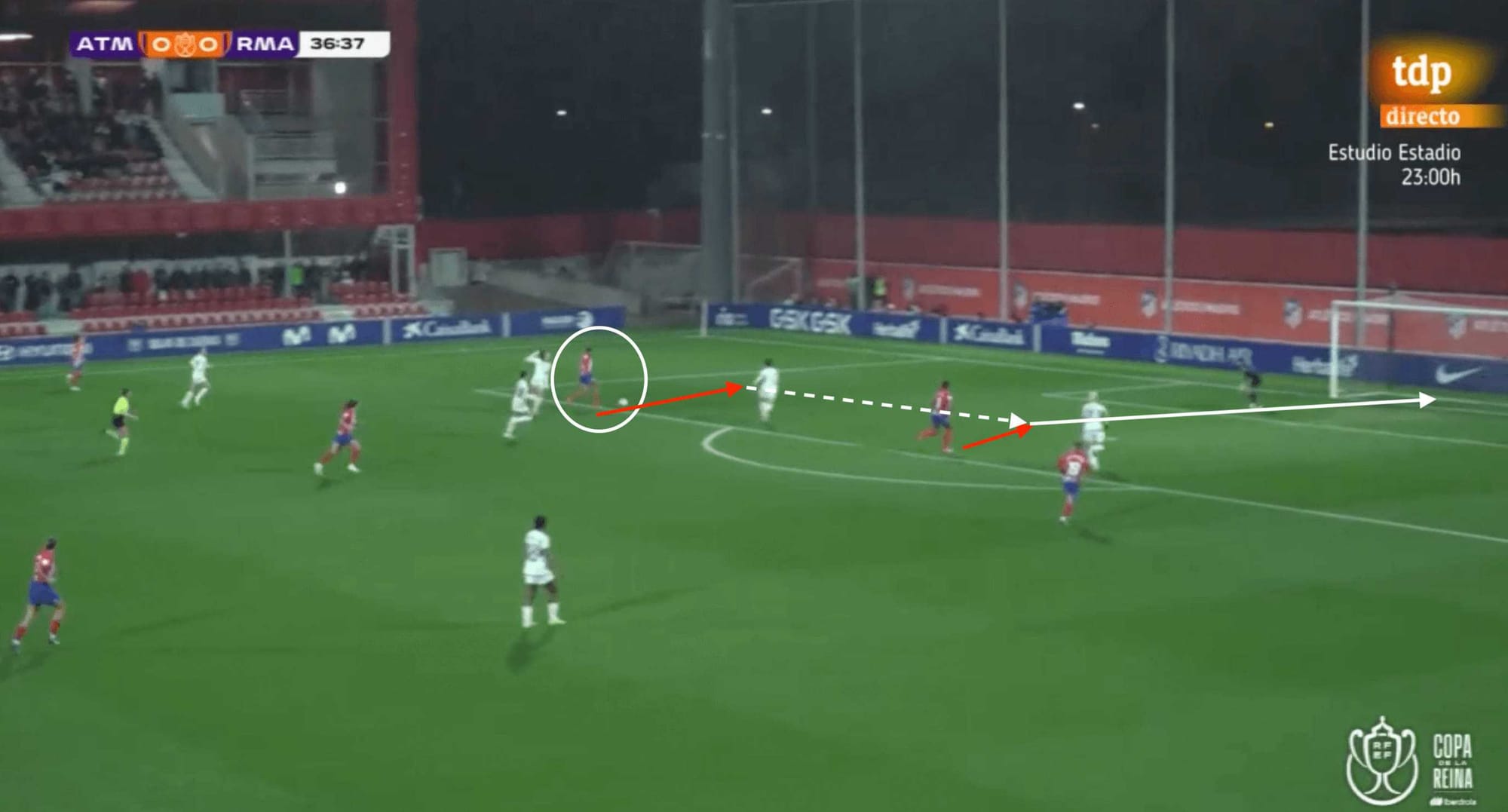
Tournament prediction
A potential group-stage exit should not overshadow Nigeria’s achievement of qualifying for the Olympics, but they will find confidence, having bested a proclaimed ‘group of death’ once before.
The alarming lack of adequate preparation has definitely thrown a spanner in the works, with off-field turmoil significantly impacting Nigeria’s tactical development.
Whatever occurs in Paris, Nigeria’s usage of youthful talent will only further their international progression with key figures who could always spring a surprise with the right tactical matchups.
It would be fair to suggest that Nigeria’s group may be too strong this summer to overcome.

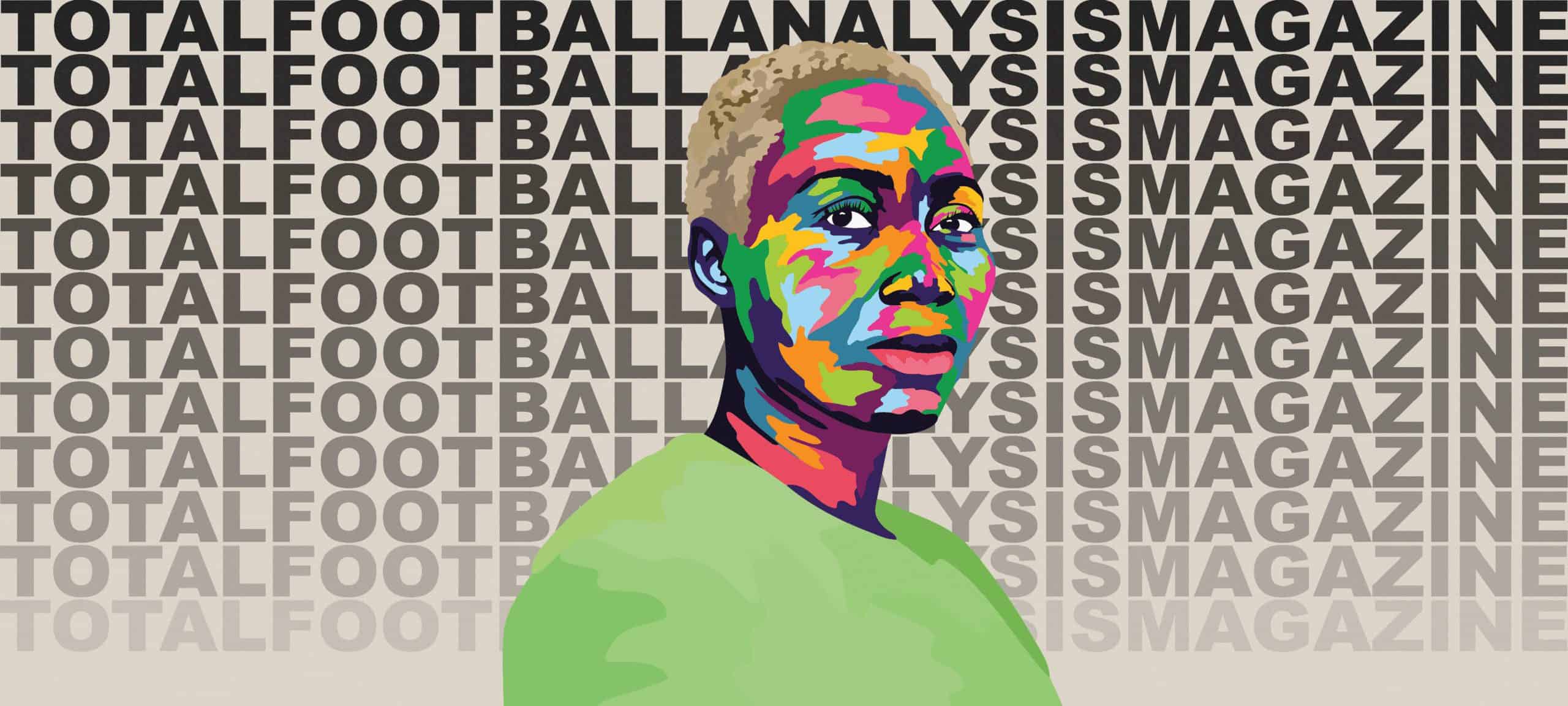



Comments